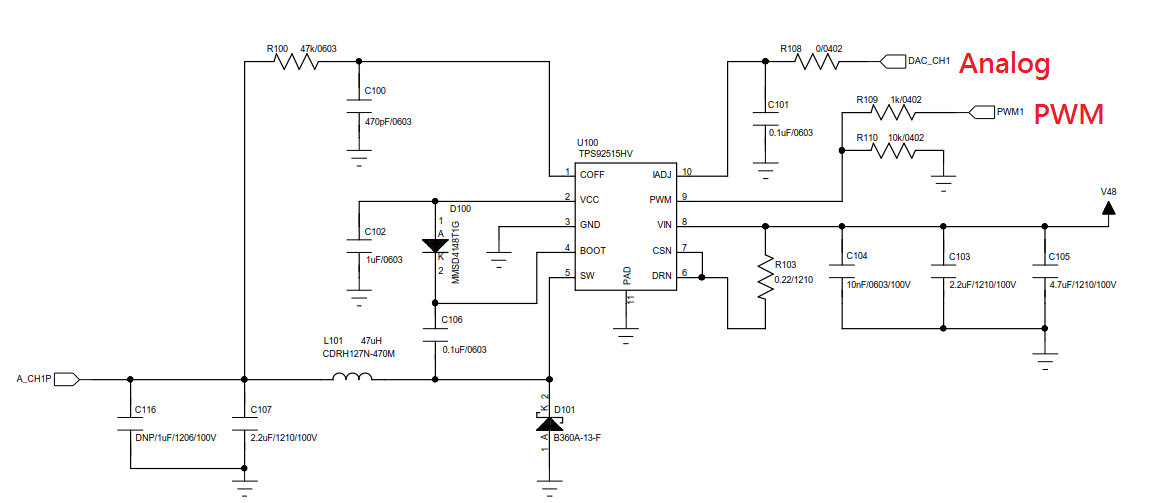Hello Everyone,
This is our design schematics, basically it is based on datasheet instruction.
We have two input signals to in our design.
When we try to input PWM 100% (3.3V) + IADJ 0V, we can see LED string light up.
As I know, there should be no current go through LED string when IADJ input is 0V.
Can someone help to explain this situation and give the suggestion how to solve this problem ?


